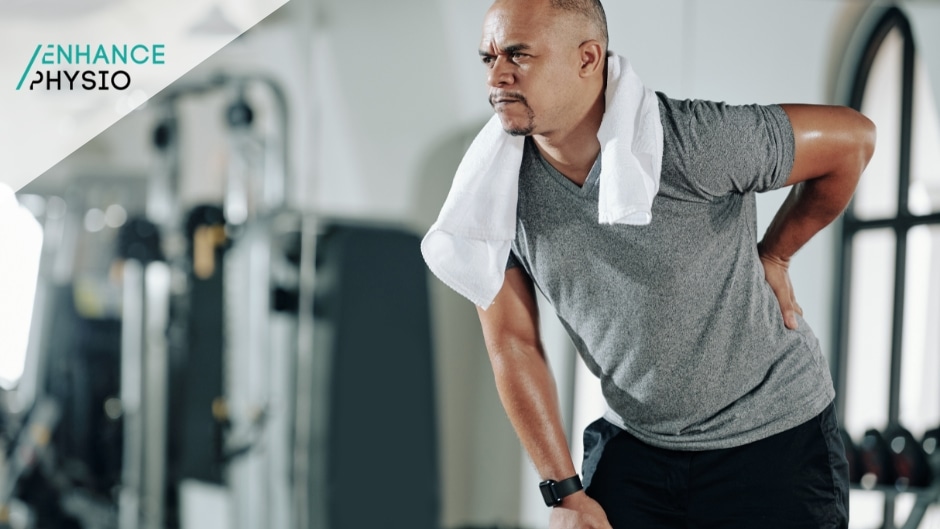Exercise is vital for maintaining a healthy lifestyle, but what do you do when dealing with pain? Finding the motivation to work out when every movement causes discomfort can be challenging. However, with the right approach and guidance, it is possible to exercise even when you have pain.
Living with pain can be a constant struggle, and it may seem counterintuitive to engage in physical activity. However, exercise has been proven to be beneficial for managing pain and improving overall well-being. It can help strengthen muscles, increase flexibility, and release endorphins, which are natural painkillers.
If you’re dealing with pain and want to incorporate exercise into your routine, it’s essential to do so safely and effectively. Specific tips and techniques can make exercising more comfortable and reduce the risk of exacerbating your pain.
1. Try a new activity
After experiencing an injury, it may seem like the best action is to stop exercising and focus on recovery. However, it is possible to use this time to explore different sports and activities. For instance, if you have an ankle injury as a runner, you can still maintain your fitness by swimming instead. Cycling is also an excellent alternative for knee pain.
It’s a good idea to consult with a physiotherapist for additional suggestions to help you stay active.
2. Exercise within your limits
Experiencing pain while running 5km doesn’t necessarily mean quitting running altogether. Consulting with a physiotherapist can aid in monitoring symptoms and creating an exercise plan that maintains fitness and minimises flare-ups. Remaining active during recovery can also improve the chances of returning to optimal performance once symptoms decrease.
3. Take the opportunity to improve your footwear and equipment
Experiencing injury and pain may lead to evaluating your equipment and technique. In the case of hip and knee pain, the kind of shoes you use can make a significant difference. Pain is typically caused by more than one factor, and your technique and equipment can often substantially impact the strain placed on your body. Your physiotherapist is a valuable resource for guidance in this regard; feel free to request an assessment for running, swimming, or gym-related activities.
4. Take to the water
One effective way to help patients with joint pain or muscle weakness exercise is through hydrotherapy. It involves immersing oneself in water to reduce joint stress and alleviate pain through additional sensory input. Water exercise can particularly benefit those experiencing chronic pain or weight-bearing discomfort. To learn more about hydrotherapy and to receive a customised program, it is recommended to consult with a physiotherapist.
5. Vary intensity and duration
It’s essential to vary your workouts if you’re dealing with pain. This means alternating days of more intense exercise or those that require longer durations with days of lower intensity or shorter duration exercises such as walking. Change up the type of exercise you do. For example, if running is painful, try a low-impact activity such as swimming or cycling.
6. Focus on good form
If your injury has altered how you move, focusing on the correct form during exercise is essential. This will help you avoid further injury and ensure that you target the right muscle groups for maximum benefit. Your physiotherapist is an excellent source of advice here. Maintaining proper alignment and posture throughout each workout can mean the difference between success and failure.
7. Listen to your body
This is the most important tip. There is no one-size-fits-all solution for exercise and pain, so make sure you listen to your body, and if pain persists, consider stopping or adjusting the intensity of the activity. Everyone’s recovery is different, so take care with each workout and don’t push yourself too hard.
8. Choose exercises that target your weak spots
If you have an injury or chronic pain, focusing on exercises that specifically target your weak spots can be beneficial. For example, if you have a hip flexor issue, doing targeted strengthening and stretching will help relieve tension and build capacity in the area. Your physiotherapist is an excellent source of advice on targeting your weak areas and can help you develop an appropriate exercise plan.
9. Give yourself time to recover
Living with pain means that you need to give yourself extra time for recovery between workouts. Ensure you get enough rest, stretching regularly and listening to your body if it needs a break. If you don’t allow for adequate recovery, this will make it harder to reach your goals and may also exacerbate your symptoms.
Following these tips can help you stay active and manage pain while you reach your fitness goals. Speak to a physiotherapist if you’re struggling with an injury or chronic pain, and they can provide tailored advice on how to exercise safely and effectively.

Final thoughts on exercising when you have pain
Don’t let pain keep you from staying active and caring for your body. By following these tips for exercising with pain, you can find ways to work around your limitations and still reap the benefits of physical activity. Remember, it’s all about listening to your body, being mindful of your pain levels, and finding exercises that work for you.
So, lace up those sneakers, embrace the challenge, and keep moving towards a healthier, pain-free life!






